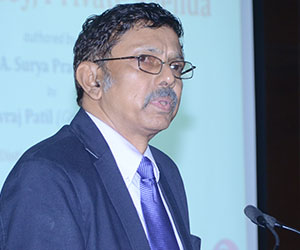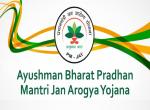June 25 marks yet another anniversary of the Internal Emergency imposed by Prime Minister Indira Gandhi in 1975, leading to the eclipse of democracy and 19 dreadful months of dictatorship, suspension of fundamental rights, incarceration of politicians and journalists critical of her regime and even forceful sterilisation of the population in rural India.
Ms.Gandhi took recourse to article 352 of the Constitution to turn a vibrant democracy into an autocracy just to remain in office after the Allahabad High Court held her guilty of corrupt practice in the previous Lok Sabha election and barred her from contesting elections for six years. The Supreme Court stayed this order but barred her from speaking or voting in Parliament, thus making her continuance as Prime Minister untenable. Unwilling to step down, and egged on by power-hungry colleagues, Ms. Gandhi spotted an un-used provision in the Constitution and with the help of a pliable President – Mr.Fakruddin Ali Ahmed – transformed herself into a dictator. This encouraged lumpen members of the Congress Party to crush dissent, ride roughshod over government officials and declare Indira Gandhi the supreme leader. This regime also wrought havoc on the Constitution and shackled every institution including Parliament, the Judiciary and the media.
The story of the Emergency is a long and painful one, but it must never be forgotten if we are to preserve the Constitution and the democratic system that we regained after the Indira Gandhi regime was thrown out by the people in the Lok Sabha election held in March, 1977. This article however will confine itself to the manner in which Indira the Dictator subverted the institution of Parliament and coerced MPs into amend the Constitution just so that she may remain in office as Prime Minister.
Fearing coercive action by Indira Gandhi, ruling party MPs vied with one another to pass some of the most shameful amendments to the Constitution, drafted exclusively to help Indira Gandhi wriggle out of the election corrupt practices case. These amendments were pushed through both Houses of Parliament because the government had jailed a number of opposition MPs. Further, the Congress Party got the support of the Communist Party of India (CPI).
The first of these, the Constitution 38 th Amendment barred judicial review of the emergency proclamation, judicial review of ordinances promulgated by the President or Governors and judicial review of laws that contravened fundamental rights.
Then came the Constitution 39 th Amendment, which was meant solely to pre-empt the Supreme Court, which was hearing India Gandhi’s election case. This extraordinary amendment prohibited the Supreme Court from hearing election petitions against the Prime Minister, Speaker, the President and the Vice- President. It said parliament would establish a body to hear such petitions. Further, it placed all laws pertaining to elections in the Ninth Schedule (to bar judicial review) and declared that with the passage of this amendment, all election petitions before courts would abate. This was followed up with the Election Laws Amendment Act passed on August 5, 1975 specifically to nullify the points upheld by Justice Jagmohanlal Sinha of the Allahabad High Court against Indira Gandhi. This amendment said anyone found guilty of a corrupt election practice could go “to the President for determination … whether such person should be disqualified and, if so, for what period”. One of the charges upheld by the Allahabad High Court judge was that Indira Gandhi, in violation of law, took the assistance of a government servant in her election campaign. In order to overcome this, the law was amended to say that if a government official while on official duty assisted a candidate in an election, he “shall not be deemed to have assisted” the candidate. It also changed the legally effective date for an official’s resignation from government service.
But this was just for starters. More was to follow. In the days and months that followed, parliament was thus consumed in just one activity – making laws to save Indira Gandhi. If this meant a blow against the Constitution, so be it. After the 39th Amendment came the Constitution 40 th Amendment which placed an anti-media law in the Ninth Schedule to bar judicial review. Then came the Constitution 41 Amendment Bill. Introduced in the Rajya Sabha on August 9, 1975, two days before the Supreme Court was to hear India Gandhi’s election petition, it amended Article 361 to say: No criminal proceedings “whatsoever” could lie in court against a person who is or who had been the President, Prime Minister, or Governor for acts “done by him, whether before he entered upon his office or during his term of office”. Also, no civil proceedings can lie against persons holding these offices “in respect of any act done before or after he entered office”. This is a typical fascist amendment. It was passed by the Rajya Sabha on the very day of introduction.
Can any democratic Constitution have a provision like this, which places some citizens above or beyond the law? The meaning of these amendments was that there was no way in which we could proceed against the Prime Minister if he or she were to commit murder either before or after assuming office. Similarly, if the Prime Minister had taken a loan and failed to repay it, there could be no civil proceedings against him or her. This shook the very foundation of our Constitution because equality before law and equal application of all laws is the basic premise of a democratic Constitution. Fortunately, though the Rajya Sabha passed this amendment with undue haste, there was some rethinking and the Bill was kept on hold.
Among the amendments made to the Constitution during the Emergency, the 42 nd Amendment was the most comprehensive and its primary aim was to clip the wings of the judiciary. It was introduced in the Lok Sabha on September 1, 1976 and after passage through the two Houses of Parliament received the President’s assent on December 18, 1976. This amendment declared that henceforth any amendment to the Constitution cannot be questioned “in any court on any ground”. It declared that the amendments to the Fundamental Rights Chapter was beyond judicial review and that Parliament’s power to amend the Constitution is unlimited “ by way of addition, variation or repeal”.
This meant that Parliament henceforth had the unfettered power to preserve or destroy the Constitution. Some of the other provisions were: Barring High Courts from ruling on the constitutionality of central laws; barring High Courts from issuing stay orders relating to “any work or project of public utility” ; insertion of Article 31 D prohibiting “anti-national activity” and stating that creating “internal disturbance” and “disrupting harmony” is anti-national; declaring that no law made in this regard is unconstitutional merely because it is inconsistent with fundamental rights in Articles 14, 19, 31. Further, in order to avoid any debarment of MPs for electoral malpractices (as in the case of Indira Gandhi), the 42 nd Amendment said courts cannot disqualify MPs found guilty of corrupt election practices. Henceforth, the President would decide on disqualification after “consulting” the Election Commission. The amendment also weakened the federal structure when it empowered central forces to operate under central control when sent to a state to preserve order.
As if all this was not enough, the 42 nd Amendment abolished the need for quorum in Parliament and state legislatures. Until this amendment, the Constitution stipulated that the quorum to constitute Parliament and state legislative bodies was 10 per cent of the strength of each House. Once this was done away with, it became technically possible for a single MP to make law for the entire country!
Finally, the most shocking and reprehensible provision in the 42 nd Amendment was the power it vested in the President for two years to amend these provisions in the Constitution, through an executive order! It said if there were any difficulties in giving effect to the Constitution as amended, the President may, by order, for up to two years, “adapt or modify the provision to remove the difficulty”. Through this provision, Parliament had passed on its exclusive power to amend the Constitution to the executive.
Working under the shadow of a dictatorship, parliament adopted break-neck speed to amend the Constitution specially when the amendment was meant to bail out the Prime Minister from the election malpractices case. The 39 th Amendment will go down as the fastest Constitutional Amendment in India’s History. It was introduced in the Lok Sabha on August 7, 1975 and passed that very day after a two hour “debate”. It was introduced in the Rajya Sabha on August 8, 1975 and passed that very day. On August 9, a Saturday, all state legislatures were summoned to ratify this amendment and on August 10, 1975 it received the President’s assent. The reason for this over speeding was the Congress Party’s desire to pre-empt the Supreme Court which was to begin hearing Indira Gandhi’s appeal against the Allahabad High Court judgement on August 11, 1975. Taken together, these amendments robbed the Constitution of its soul and turned India into a dictatorship.
Fortunately, the Congress Party was routed in the 1977 Lok Sabha election and the Janata Party, a rag-tag coalition of disparate parties which was brought together under one flag and symbol by leaders of these parties while in jail, was swept to power. This regime collapsed within three years, but one thing the Janata Party, which had stalwarts like Morarji Desai, Jagjivan Ram, Atal Behari Vajpayee, Nanaji Deshmukh and Madhu Dandavate, did for India was to restore the country’s democracy and its independent institutions through the Constitution(44 ) Amendment.
Therefore, come June 25, we must thank the Janata Party for putting our democracy back on track and remember the millions of citizens who suffered during the Congress Party’s dictatorship. We must also remember gratefully the resistance put up by political and social workers, including cadres of the Rashtriya Swayamsevak Sangh, the Socialists and the Communist Party of India (Marxist), because those who forget history are condemned to repeat it!
Published Date: 25th June 2014, Image source: http://images.jagran.com










Post new comment